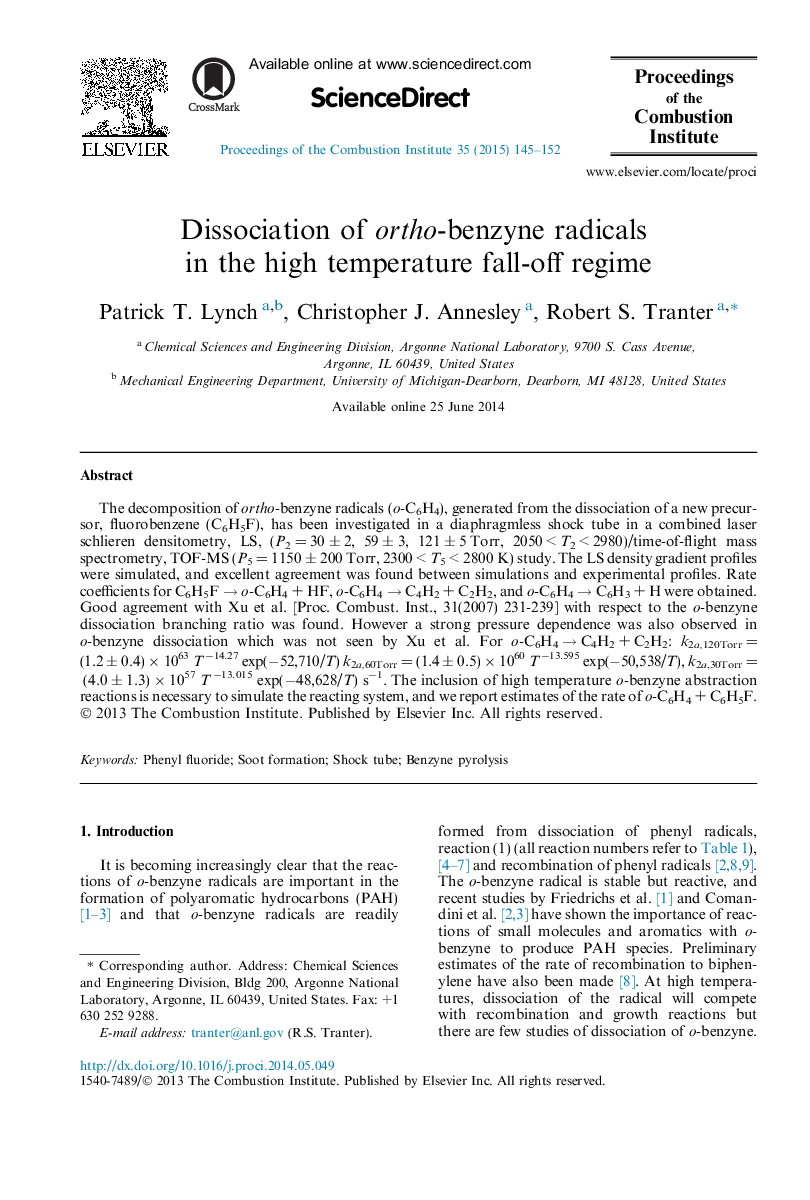| Article ID | Journal | Published Year | Pages | File Type |
|---|---|---|---|---|
| 6679218 | Proceedings of the Combustion Institute | 2015 | 8 Pages |
Abstract
The decomposition of ortho-benzyne radicals (o-C6H4), generated from the dissociation of a new precursor, fluorobenzene (C6H5F), has been investigated in a diaphragmless shock tube in a combined laser schlieren densitometry, LS, (P2 = 30 ± 2, 59 ± 3, 121 ± 5 Torr, 2050 < T2 < 2980)/time-of-flight mass spectrometry, TOF-MS (P5 = 1150 ± 200 Torr, 2300 < T5 < 2800 K) study. The LS density gradient profiles were simulated, and excellent agreement was found between simulations and experimental profiles. Rate coefficients for C6H5F â o-C6H4 + HF, o-C6H4 â C4H2 + C2H2, and o-C6H4 â C6H3 + H were obtained. Good agreement with Xu et al. [Proc. Combust. Inst., 31(2007) 231-239] with respect to the o-benzyne dissociation branching ratio was found. However a strong pressure dependence was also observed in o-benzyne dissociation which was not seen by Xu et al. For o-C6H4 â C4H2 + C2H2: k2a,120Torr = (1.2 ± 0.4) Ã 1063Tâ14.27 exp(â52,710/T) k2a,60Torr = (1.4 ± 0.5) Ã 1060Tâ13.595 exp(â50,538/T), k2a,30Torr = (4.0 ± 1.3) Ã 1057Tâ13.015 exp(â48,628/T) sâ1. The inclusion of high temperature o-benzyne abstraction reactions is necessary to simulate the reacting system, and we report estimates of the rate of o-C6H4 + C6H5F.
Keywords
Related Topics
Physical Sciences and Engineering
Chemical Engineering
Chemical Engineering (General)
Authors
Patrick T. Lynch, Christopher J. Annesley, Robert S. Tranter,
